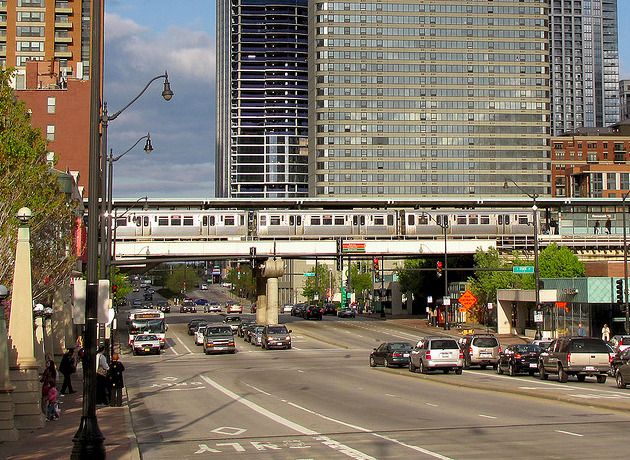New rail stations may be gentrifying neighborhoods to an extent that the people most likely to take advantage of transit services are being pushed out, forced to relocate because of higher prices. This is a claim that strikes deep at the heart of one of the most frequently used arguments in favor of new investments in transit systems, that it has the potential to produce significant ancillary development and therefore alter the structure of the urban environment, even as it increases mobility options for everyone.
A new study from Northeastern University’s Dukakis Center by Stephanie Pollack and Barry Bluestone doesn’t quite go that far. But it does indicate that there is a significant correlation between the construction of new transit lines and demographic change in neighborhoods. Is that to the detriment of the public transportation system, a sort of “cycle of unintended consequences,” as the report puts it?
By evaluating changes in 42 neighborhoods around new transit stations in 12 metropolitan areas, the researchers found that:
- 64% of new transit neighborhoods saw higher population growth than the region as a whole
- 62% saw a larger increase in owner-occupied housing
- 62% saw a larger increase in median household income
- 74% saw a larger increase in rent
- 71% saw a larger increase in automobile ownership
These facts seem to demonstrate that the arrival of a new transit station will result in significant changes in the type of people who inhabit the neighborhood. Of the cities studied, those with light rail were the most likely to see major changes. The evidence related to increases in housing costs, owner-occupation, and automobile ownership seems to suggest that the population of these neighborhoods becomes wealthier over time. (This does not necessarily mean the poorer residents of the neighborhood have moved out; growing populations could mean simply a higher density over time. This study makes an assumption this this transition is happening.) Interestingly, this does not necessarily mean more white: Only half of new transit neighborhoods saw an increase in their white population relative to the region as a whole, with the other half seeing a drop.
Does that mean less transit use? The study shows that of the neighborhoods studied, 57% saw a larger increase in public transportation use than the metropolitan area. That should be expected, since the investment of millions of dollars in a new station should produce higher ridership. Troublesomely, however, 40% of the station areas had less of an increase in transit use than their respective regions. Is that a reflection of the changing demographics of the neighborhood?
As the study notes, “there is a symbiotic relationship between diverse neighborhoods and successful transit: transit systems benefit from and depend on the racial and economic diversity of the neighborhoods that they serve, just as low-income households and people of color depend on and benefit from living in neighborhoods served by transit.” If the improvement of transit options alters the composition of a community’s population so dramatically that it replaces lower-income people reliant on transit with middle- and upper-income individuals who aren’t, public transportation use may actually fall. It’s a perverse consequence of the fact that wealthy people now appear to want to live in places with transit options, but can’t necessarily be expected to take advantage of them in their daily commutes.
It should be noted that some of these effects may be in a city’s interest, whether or not transit ridership increases. Having higher-income residents move into a neighborhood may increase the local tax base and reduce negatives like crime and blight. At the same time, displacement of poor people may reduce their ability to get around easily by public transportation.
In order to prevent similar situations from occurring in other cities where new transit systems are installed, the Dukakis Center has produced a toolkit designed to suggest was to orient a transit station around the existing neighborhood. This may involve planning cooperatively, engaging the community, and developing community benefits agreements.
Ultimately, the effects of transit investments on communities vary significantly depending on the place. Some cities have seen significant gentrification in their new station neighborhoods, others have not; some areas feature high-income residents who use transit, others do not. But when planning expansions of transportation networks, it is essential to plan for these externalities. You don’t want to build a transit system that’s so appealing that no one rides it.

Yonah Freemark is a senior research associate in the Metropolitan Housing and Communities Policy Center at the Urban Institute, where he is the research director of the Land Use Lab at Urban. His research focuses on the intersection of land use, affordable housing, transportation, and governance.















